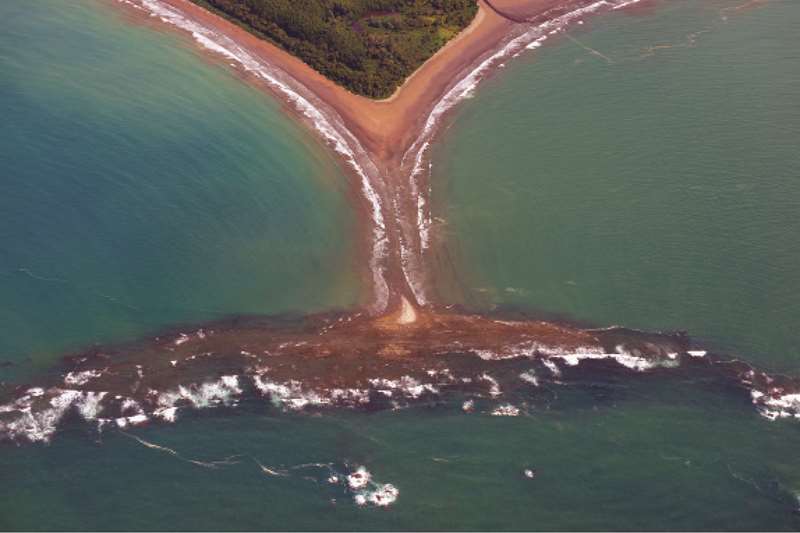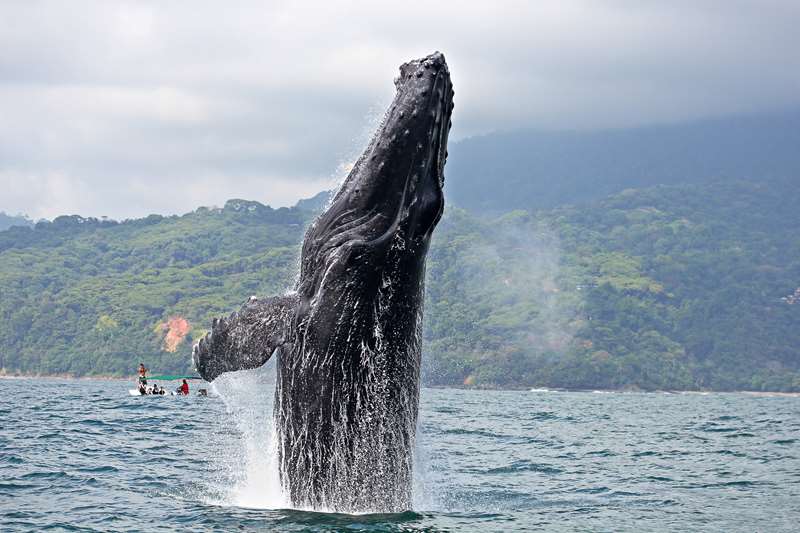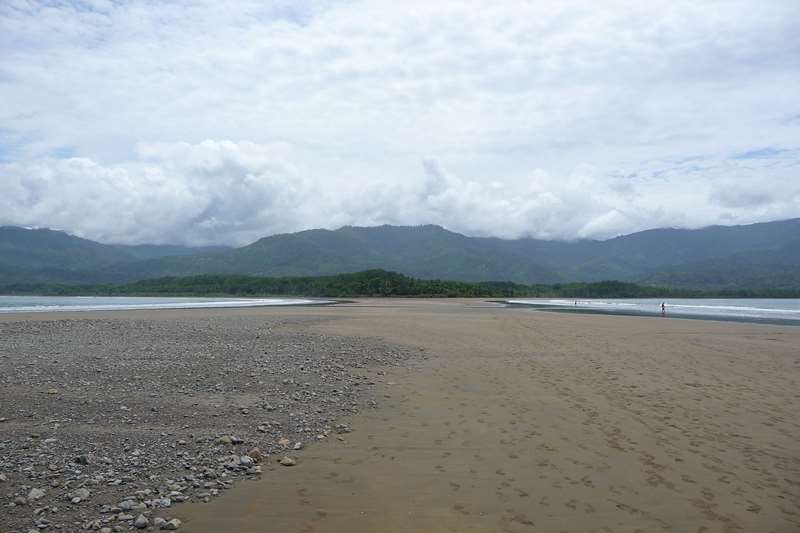
Cool Places – Marino Ballena National Park
Hitting the highway headed south toward the central coast, you’ll find the Marino Ballena National Park (Parque Nacional Marino Ballena) in Puntarenas. Located 10 miles south of Dominical and 112 miles southwest of San Jose, the park offers all sorts of natural wonders to inspire awe and appreciation.
Established in 1990 with 5510 ha of beach, mangrove estuary, and lowland rainforest, the park is named for the humpback whale (Megaptera novaeangliae) that migrates here to mate. They come north from Antarctica July through November, and south from California and Canada December through April. Other whale species here include the false orca and pilot. This park offers the best place in Costa Rica to view whales from shore. Green marine iguanas, bottle nosed and common dolphins, manta rays, hammerhead sharks, turtles (olive ridley, hawksbill, leatherback and green), corals, sponges, anemones, lobsters, and many more sea creatures also call this place home. Land life is also abundant, with howler, capuchin and squirrel monkeys, sloths, pizotes and an occasional puma or ocelot. In the air you can see roadside and white hawks, chestnut-mandibled and keel- billed toucans, gulls, sand pipers and pelicans.
Turtle nesting season is May through November, with the largest number of turtles arriving with the waning moon in September. The beach is not closely monitored or regulated so please conduct yourself responsibly around the turtles, giving them space and quiet, and using only red-covered lights (and no camera flashes).
Snorkelers can revel in the underwater beauty found here, though watch out for currents and riptides. Waves are reported as generally gentle and the sea calm. Beachcombers find great rewards, especially when the tide is low enough to allow a walk to Punta Uvita Tombolo, the sandbar that extends 1 km into the Pacific where the rock reef forms, appropriately, the shape of a whale tail. Boat tours to Ballena Island, 1.9 miles offshore, offer a wonderful opportunity to see plenty of marine life and get much closer to the whales.
Central America’s largest Pacific coral reef, which forms a crescent with the three small islands called Las Tres Hermanas, grows here. It contains a total of 18 coral species, rendering it one of the best places to observe corals in the area. Snorkelers and divers can easily see 8 coral communities and 2 coral reefs, mostly of stony coral (Porites lobataI), star column coral (Pavona clavus), and cauliflower coral (Pocillopora elegans). Between Marino Ballena National Park and nearby Cano Island Reserve, snorkelers and divers will find some of the best spots anywhere.
Uvita, at the north end of the park, is a small communi ty with beautiful beaches and clear blue water. Popular for horseback riding, scuba and skin diving, swimming, and beach walks, this beach lies inside the park’s protected area, meaning no marine hunting is allowed. South of the park are the famous sea caves of Ventana Beach.
The park has 4 official access routes, all found from the South Inter-American Highway: Uvita, Colonia, Ballena, and Piñuela. It’s open daily 8-4 and carries an entrance fee of $12 per person. A park ranger station with restrooms is here. No overnighting is allowed in the park but the Uvita area offers many hotels. Canyoning and waterfalls give you additional choices for things to do.


